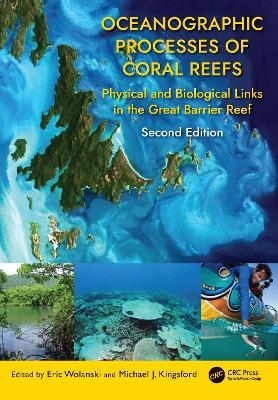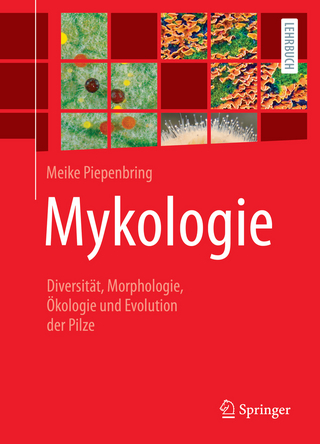
Oceanographic Processes of Coral Reefs
CRC Press (Verlag)
978-1-032-34074-6 (ISBN)
In the last two decades since publication of the first edition, substantial advancements have been made in the science, the need for transdisciplinary approaches to coral reef protection greater than ever before. This new edition, now in full color throughout with accompanying animations, goes beyond identifying foundational information and current problems to pinpoint science-based solutions for managers, stakeholders and policy makers.
Coral reefs are connected by currents that carry plankton and the larvae of many reef-based organisms. Further, they supply food to reefs. Currents also bring pollutants from the land and, together with the atmosphere, affect the surrounding ocean. The chapters in this book provide a much-needed review of the biophysics of reefs with an emphasis on the Great Barrier Reef as an ecosystem. The focus is on interactions between currents, waves, sediment and the dynamics of coastal and reef-based ecosystems. The topographic complexity of reefs redirects mainstream currents, creates tidal eddies, mushroom jets, boundary layers, stagnation zones, and this turbulence is enhanced by the oceanographic chaos in the adjoining Coral Sea. This is the environment in which particles and organisms, of a range of sizes live, from tiny plankton to megafauna. This generates faunal connectivity at scales of meters to thousands of km within the Great Barrier Reef and with the adjoining ocean.
Pollution from land-use is increasing and remedial measures are described both on land and on coral cays. The impact of climate change is quantified in case studies about mangroves and corals. Modelling this biophysical complexity is increasing in sophistication, and the authors suggest how the field can advance further.
Adjunct Professor Eric Wolanski is an estuarine oceanographer and ecohydrologist at James Cook University. His research interests range from the oceanography of coral reefs, mangroves, and muddy estuaries to the interaction between physical and biological processes determining ecosystem health in tropical waters. He has published 430 book chapters, scientific papers and reports. He has a Google Scholar h-index of 87 and 25,000 citations. Eric is a Fellow of the Australian Academy of Technological Sciences and Engineering, the Institution of Engineers Australia (ret.), and l’Académie Royale des Sciences d’Outre-Mer (Belgium). He was awarded an Australian Centenary medal, 2 Doctorate Honoris Causa (by the catholic University of Louvain and the University of Hull), a Queensland Information Technology and Telecommunications Award for Excellence, and a Lifetime Achievement Award by the Estuarine & Coastal Sciences Association. Eric is an Editor-in-Chief of Wetland Ecology and Management, and of the Elsevier book series Ecohydrology from catchment to coast, an Honorary Editor of Estuarine, Coastal and Shelf Science, and a member of the editorial board of 4 other journals. Michael J. Kingsford is a Distinguished Professor in the Marine Biology and Aquaculture group of the College of Science and Engineering at James Cook University (JCU), Australia. Over a 14 year period he has held positions as Head of the School of Marine Biology and Tropical Biology and Dean of the College of Marine and Environmental Sciences. Furthermore, he has been President of the Australian Coral Reef Society, Director of One Tree Island Research Station, member of the Great Barrier Reef Research Foundation and the Museum of Tropical Queensland advisory committees. His awards include, the K. Radway Allen Award Awarded for an outstanding contribution in fish or fisheries science by the Australian Society for Fish Biology (2017) and, the AMSA Jubilee Award (2021) for excellence in marine research and an outstanding contribution to marine research in Australia. He has published extensively on the ecology of reef fishes, biological oceanography, climate change and jellyfishes. In total, he has two hundred and twenty publications including four major books, forty two chapters in books, 165 refereed publications and nine refereed proceedings (h-index Google Scholar = 58). He has been a Chief Investigator with the ARC Centre of Excellence for Innovative Coral Reef Studies. A major focus of his research has been on reef fish ecology and demography, connectivity of reef fish populations, the ecology and behavior of larval fishes, the utility of Marine Protected Areas, environmental records in corals and fishes. He has forty years of research experience of studying fishes, jellyfishes and oceanography in temperate and tropical regions of Australia and other parts of the world.
Section 1: The key role of oceanography and how it influences life in the GBR 1. Chapter 1: The emergence of biophysical sciences for the Great Barrier Reef 2. The physical oceanography of the Great Barrier Reef: a review 4. Biological and geological links on coral reef islands 4. Currents modulate the genetic character of marine populations in the Great Barrier Reef 5. Advances in understanding climate change on the Great Barrier Reef using coral-based proxies 6. From the microscale to the reef: the role of microorganisms in the chemical ecology and gaseous emissions of the Great Barrier Reef Section 2: Land-sea connectivity 7. Great Barrier Reef ecohydrology 8. Sediment and nutrient flux from land 9. Dispersal and environmental impacts of pan-oceanic contaminants 10. Jellyfish: A Window into pesticide distribution and risks on the Great Barrier Reef 11. The influence of the spatio-temporal dynamics of fish populations on the outcomes of land-sea connectivity Section 3: Biophysical oceanography 12. Estimates of wind drift coefficient to inform biophysical models of seagrass dispersal in the Great Barrier Reef 13. Interactions between dugong biology and the biophysical determinants of their environment: a review 14. Bio-physical interactions of jellyfish on the Great Barrier Reef 15. More intense severe tropical cyclones in recent decades cause greater impacts on mangroves bordering Australia’s Great Barrier Reef 16. Dispersal and connectivity of marine turtles in the Great Barrier Reef and links to the South Pacific Ocean 17. The interactions between larval behaviour and oceanography 18. Incorporating biophysical larval dispersal simulations into coral reef conservation decision-making 19. A historic perspective to thermal and heatwave induced bleaching on the Great Barrier Reef 20. Biophysical processes involved in the initiation and spread of population irruptions of crown-of-thorns starfish on the Great Barrier Reef 21. The biophysics of sharks and rays on the Great Barrier Reef Section 4: Consequences: Impact on GBR water and remediation 22. Impacts of climate change stressors on the Great Barrier Reef 23. Selective breeding and promotion of naturally heat-tolerant coral reef species 24. Coastal wetland restoration: Case studies from Great Barrier Reef catchments 25. Pathways to improved water quality in the GBR lagoon – exploring opportunities for broadscale application of low-risk practices in the Lower Burdekin irrigated agriculture areas 26. Raine Island Recovery Project – Intervening at one of the most significant sites on the Great Barrier Reef 27. An overview of environmental engineering methods for reducing coral bleaching stress 28. Sexual reproduction of reef corals and application to coral restoration Section 5: Epilogue 29. Great Barrier Reef biophysics: A synthesis of challenges and opportunities.
| Erscheinungsdatum | 02.03.2024 |
|---|---|
| Zusatzinfo | 23 Tables, black and white; 82 Line drawings, color; 26 Line drawings, black and white; 105 Halftones, color; 7 Halftones, black and white; 187 Illustrations, color; 33 Illustrations, black and white |
| Verlagsort | London |
| Sprache | englisch |
| Maße | 210 x 280 mm |
| Gewicht | 893 g |
| Themenwelt | Naturwissenschaften ► Biologie ► Botanik |
| Naturwissenschaften ► Biologie ► Ökologie / Naturschutz | |
| Technik | |
| Weitere Fachgebiete ► Land- / Forstwirtschaft / Fischerei | |
| ISBN-10 | 1-032-34074-6 / 1032340746 |
| ISBN-13 | 978-1-032-34074-6 / 9781032340746 |
| Zustand | Neuware |
| Informationen gemäß Produktsicherheitsverordnung (GPSR) | |
| Haben Sie eine Frage zum Produkt? |
aus dem Bereich


